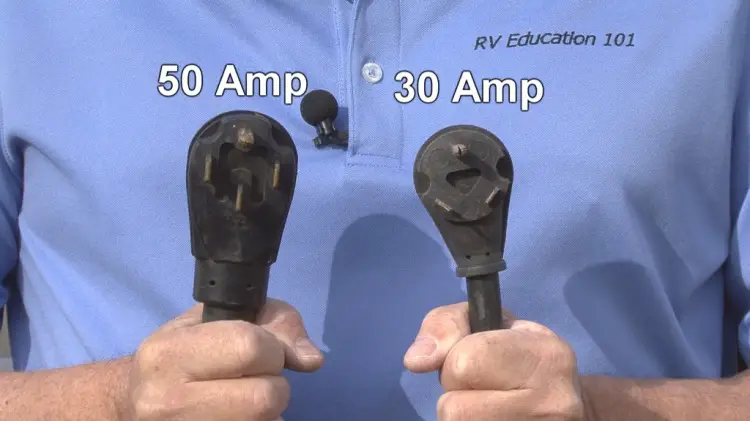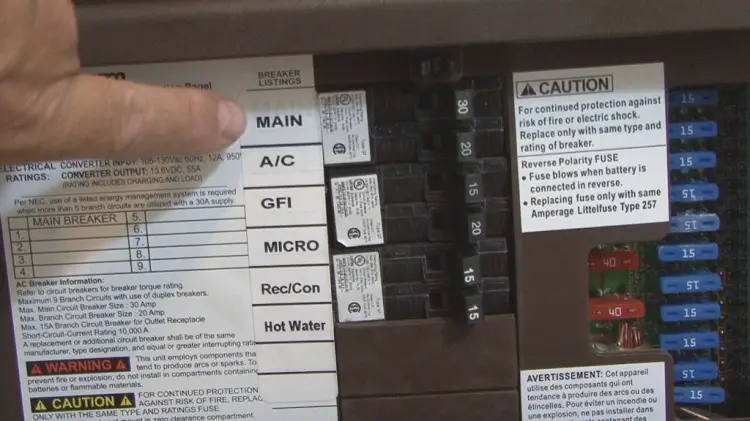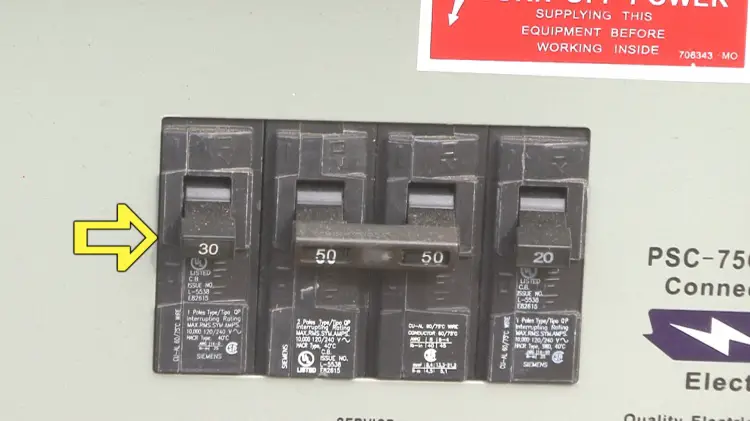Today I want to discuss a topic I think is important for all RV owners to understand. That topic is living on 30 amps in your RV.

Typically RVs come equipped with either a 30 amp electrical system or a 50 amp electrical system. The majority of RVs are equipped with a 30 amp electrical system. Using the 30 amp electrical system in your RV is quite different than using a 200 amp electrical system at home.
Before we get immersed in the topic I think it is important to review some very basic electrical formulas. If you understand these simple formulas you will begin to understand why a circuit in your RV, or at the campground electric pedestal, is overloaded.
Watts / Volts = Amps
Amps X Volts = Watts
Watts /Amps = Volts
These basic formulas can be used to answer questions based on what information is available at the time. If you have two pieces of information you can solve any electrical equation dealing with your RV’s electrical system.

We already know the RV has a 120 volt AC electrical system, so that is the first piece of information. Labels on appliances typically identify the wattage and or amperage of the appliance, so this is the second piece of information. An example would be attempting to use two 120-volt appliances at the same time that total 2,000 watts. The formula is 2,000 watts / 120 volts = 16.7 amps. If both of these appliances were used at the same time on the same 15 amp circuit the circuit breaker in the RV would trip.

Another example would be determining the maximum wattage capacity for an RV with a 30 amp, 120-volt AC electrical system. The formula is 30 amps X 120-volts = 3,600 watts. If you exceed the total 3,600 watt capacity or the total 30 amp capacity it is highly likely the 30 amp breaker in the RV, or the 30 amp breaker at the campground pedestal would trip.

You can go one step further by looking at the power distribution center in your RV. You will notice there are several different circuits, identified by the individual circuit breakers. Let’s take a 15 amp circuit for example, 15 amps X 120 volts = 1800 watts. A 15 amp circuit that is used solely for electrical outlets in the RV is based on the premise that you will not use all of the outlets on that circuit at the same time, or use appliances that exceed the amperage rating. If for example you attempt to use a coffee pot and an electric skillet at the same time the 15 amp breaker in the power distribution box will probably trip. Here’s why: The combined 16 amps X 120 volts = 1920 watts which exceeds the 1800 watt rating of a 15 amp circuit.

For devices in the RV that require more amperage you will notice larger sized circuit breakers in the power distribution box. For example the roof air conditioner is on a separate 20 amp circuit breaker. What is important to understand here is if you attempt to use too many power hungry devices in the RV at the same time it’s possible to damage the appliances and electronic devices. Let’s say your roof air conditioner is drawing 13 Amps, you start the microwave and it draws 10 amps and you put some bread in the toaster drawing another 8 amps. In this situation you did not exceed any of the individual circuits in the RV, but you did exceed the campground’s 30 amp service resulting in the 30 amp circuit breaker tripping.
Living on 30 amps basically comes down to monitoring how many appliances or devices you are using at the same time, and on what circuits. In a typical RV with a 30 amp electrical service some of the power hungry appliances and portable devices are the air conditioner, electric water heater, microwave, coffee maker, electric skillet, hair dryer, space heaters and a toaster. The key to living on 30 amps is to not exceed the amperage of an individual circuit, and to not exceed a total of 30 amps at any given time.
With a better understanding of your RV’s electrical system and some simple electrical formulas you can live comfortably on 30 amps with little to no problems.
Watch the Living on 30 Amps Video
Subscribe to our RV 101® Youtube Channel
Happy Camping
Mark J. Polk
Visit our in depth RV Online Training site

